As Mick Jagger turns 80, we count down the best Rolling Stones albums
The Stones frontman is celebrating his 80th birthday, and we're looking back at the band's 20 greatest albums
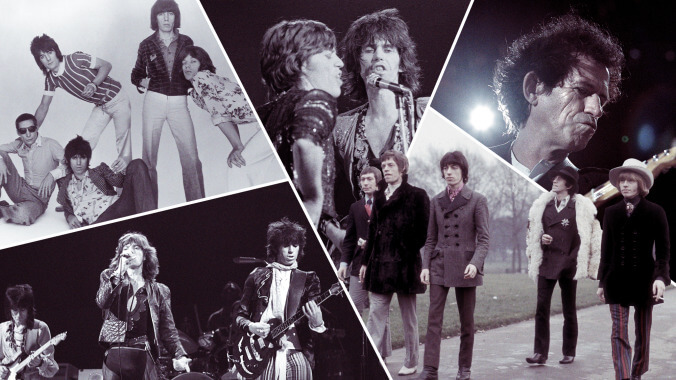
More than six decades after the Rolling Stones performed their first show, at London’s Marquee Club in July 1962, the self-proclaimed World’s Greatest Rock and Roll Band is still touring, making music (a new album is in the works), and living hard. As frontman Mick Jagger celebrates his 80th birthday on July 26, 2023, and with original surviving members Jagger, Keith Richards, and new kid Ronnie Wood (he’s only been with the band for 48 years) keeping the Stones legacy alive—no other rock band has persevered for this long and at this scale—The A.V. Club is taking a deeper look at the Stones’ body of work.
Of course, it’s difficult to consolidate the band’s career to a mere 20 albums, some of which rank among the best in rock history. That means leaving out a few high points and some interesting detours, like the career-sustaining 1994 set Voodoo Lounge, the vital punch of Out Of Our Heads, and the loose-limbed Black And Blue. But the resulting list most accurately conveys the power and range of what the Stones have achieved during their 60-plus spins around the sun.
This article originally published on July 11, 2022

Heavily bootlegged over the years and recently released in complete form, Live At The El Mocambo may be the best live document of the band, an album that simultaneously captures their majesty and grit. This dichotomy stems from how the performance arrived at a weird stage in their career, namely the early days of 1977, when they were still figuring out how to incorporate Ronnie Wood as their second guitarist. Their common language turned out to be the blues, with a good portion of the performance dedicated to live jams on oldies. This gave the band some compelling new material for the Love You Live album, but the appeal of this live set is how it captures the Stones hunkered down in the small Toronto club, playing with hunger. They sound alive and excited as they discover how they’ll operate with Ronnie as part of the team.
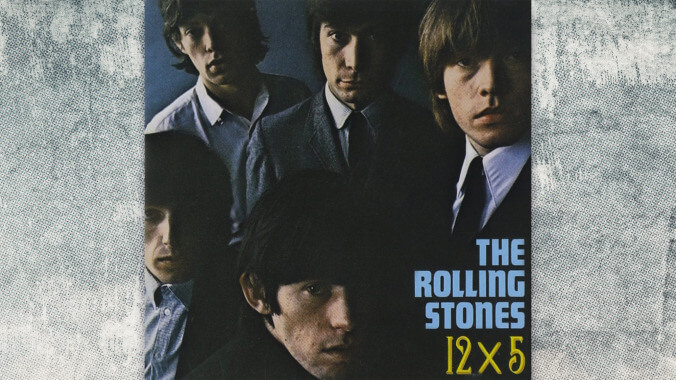
Every British rocker of the 1960s has a complicated discography. The Rolling Stones are no exception. They crafted their albums for a British audience and then their American label assembled their respective counterparts with no respect for continuity. Still, the American versions of Stones albums often rivaled their British counterparts and, occasionally, even surpassed them. Such is the case with 12×5, the American expansion of the British EP Five By Five. Recorded at the Stones’ spiritual home of Chess Records in Chicago, Five By Five was anchored by a rollicking version of Chuck Berry’s “Around And Around,” an explicit nod to the pioneering blues label, as was the instrumental “2120 South Michigan Avenue,” which was named after the studio’s address. “2120 South Michigan Avenue” is credited to Nanker Phelge, the pseudonym the Stones collectively adopted for group compositions, an affectation they’d shake as Mick Jagger and Keith Richards grew as songwriters. Here, the Jagger/Richards tracks sit in tandem with the Nanker Phelge cuts and both demonstrate a band growing assured of their strengths: “Congratulations” is a sideways attempt at pop, “Good Times, Bad Times” is drenched in ringing 12-string guitars, while the tremolo-laden “Empty Heart” and the laconically malevolent “Grown Up Wrong” provide the sonic and spiritual foundation for the dark, dirty grime of garage rock.
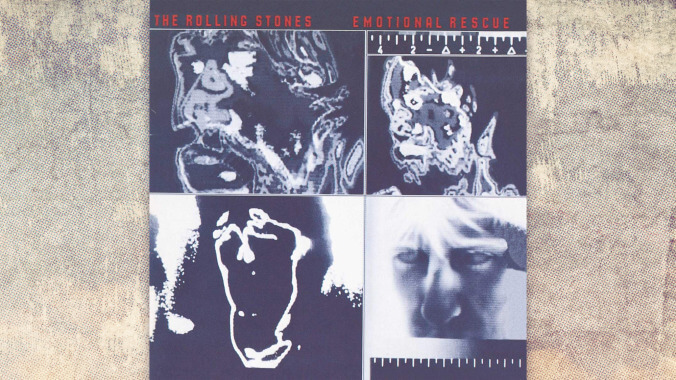
Revitalized by 1978’s Some Girls, an album that seemed as weighty as it did fresh, the Rolling Stones followed up by delivering Emotional Rescue, a record where they seem absolutely unencumbered by such notions as style and substance. Tonally, it’s their lightest record since at least the mid-’60s, and the albums is filled with “Summer Romance” and celebrations of “Where The Boys Go,” songs that are knowing without being camp. The title track rivals “Miss You” as their best excursion into disco but this isn’t a dance-rock album, even if it opens with the manifesto of “Dance (pt.1 ),” nor do the new wave flirtations of “She’s So Cold” amount to a lasting relationship. The transience is the charm of Emotional Rescue: it’s an album that exists entirely in its moment, a summertime party record where Charlie Watts sets the pace with his exquisite sense of swing.
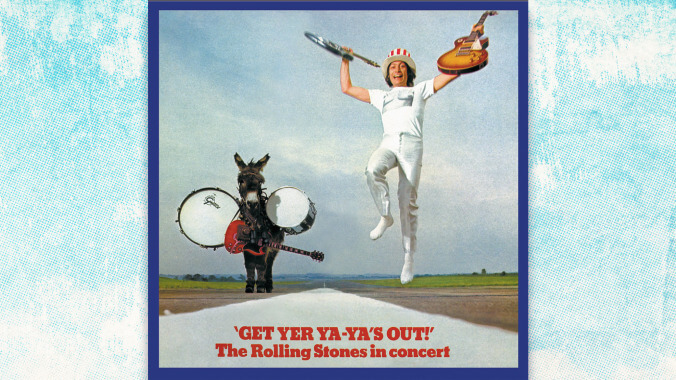
Get Yer Ya-Ya’s Out begins with the Rolling Stones being introduced to the crowd at Madison Square Garden as the “Greatest Rock and Roll Band in the World,” and in November 1969, they likely were. Not that it came easy. Earlier that year, the recently fired Brian Jones died in a drowning accident at his home, a tragedy that would be bookended later in 1969 by the disaster at the tour’s closing date at Altamont Raceway where fan Meredith Hunter was stabbed to death by a member of the Hells Angel during the band’s set. Get Yer Ya-Ya’s captures a brief respite between tragedies, with new guitarist Mick Taylor easing into the band. Taylor shines during the menacing mini-epic “Midnight Rambler” and helps give a bit of languid charm to the album’s heavy dose of Chuck Berry. “Street Fighting Man” and “Jumpin’ Jack Flash” feel meatier and meaner in this live setting, setting the stage for the supremely sleazy Stones of the ’70s.
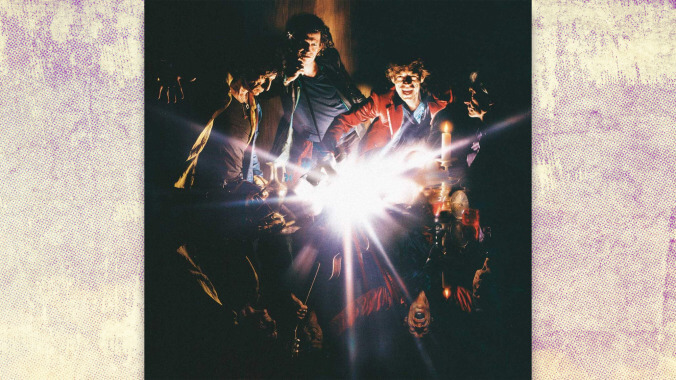
Mick Jagger and Keith Richards settled their differences in time for Steel Wheels, the 1989 album that provided the blueprint for the Rolling Stones in middle age: a band who made handsome, respectable product to accompany new tours. It was a formula that sustained the Stones into the 2000s when they suddenly snapped back to life with A Bigger Bang. Maybe the increase of energy and sharper focus was Jagger and Richards’ reaction to news of Charlie Watts’ throat cancer, a diagnosis that arrived during the early stages of their songwriting for this album. When it came time to record, this trio laid down the tracks with producer Don Was, keeping the sound lean and direct: Unlike Bridges to Babylon, there’s nary a nod to passing trends, yet this isn’t weighed down by self-conscious history as Voodoo Lounge is. From the moment “Rough Justice” kicks the proceedings off in a hailstorm of greasy guitar and thundering backbeat, this is a rock and roll album, delivered by a band who suddenly was invested in their process again.
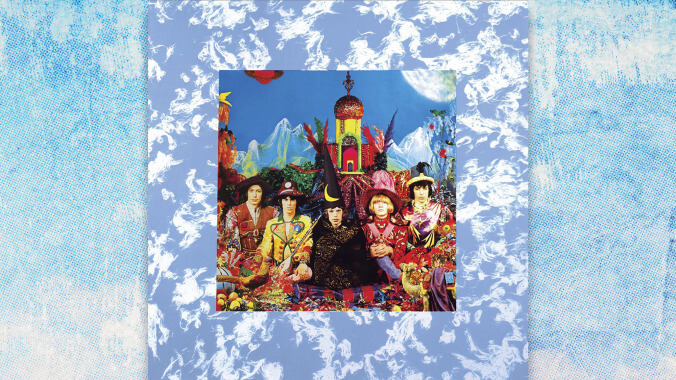
Recorded during a time of great turmoil within the Rolling Stones—the band was being hounded in the press for their drug use, leading to a February 1967 raid at Keith Richards’ home—Their Satanic Majesties Request reflects its chaotic creation. Due to the impending legal troubles along with tensions within the group—model Anita Pallenberg left Brian Jones for Keith Richards during a trip to Morocco—it was very rare that all band members were simultaneously in the studio, leading to such oddities as Bill Wyman receiving a songwriting credit in “In Another Land’ and Jones slathering the tracks with overdubs with every exotic instrument he could grab. While the Stones do indulge in flowery hippie nonsense, the mess is compelling, particularly with the wallop of Charlie Watts helping to bring “Citadel,” “2000 Man” and “2000 Light Years From Home” back to earth.
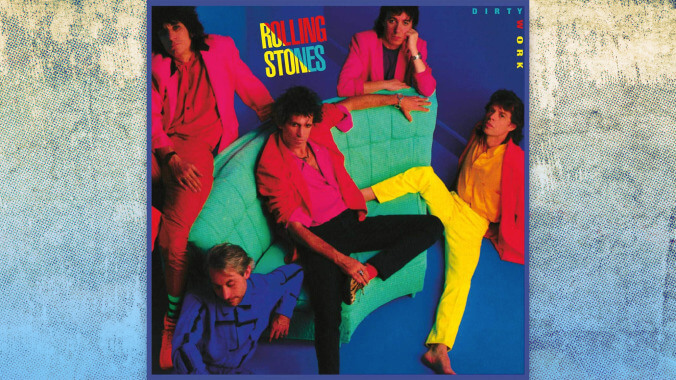
Widely reviled and unmistakably tied to its time, Dirty Work is often—and wrongly—perceived as the nadir of the Rolling Stones catalog, with the band itself happy to leave its tunes behind in the 1980s. Listening to Dirty Work now, the disdain for the record seems misguided. Steve Lillywhite pushes the Stones straight into the glaring neon light of the mid-’80s, his brittle, cacophonic co-production accentuating the malevolent tension between Mick Jagger and Keith Richards. The guitarist seethed over the singer’s desire to pursue a solo career singing modern pop, a rift that manifests in hard-edged, nasty-spirited rock and roll. Throughout the record, Jagger and Richards seem at war with each other—when Mick snarls in “Had It With You,” it’s hard not to think that he’s speaking to his partner—and that perpetual meanness generates music that’s imaginative, sharp and smart, qualities that are inherent to the Stones.

Sludgy and sour, Goats Head Soup can flirt with the cartoonish—witness “Dancing with Mr. D.,” which is as silly as “Sympathy For The Devil” is sinister—yet that state of heightened reality blends beguilingly with a palpable sense of debauchery. Save for “Angie,” a ballad that quivers in its own sensitivity, the Rolling Stones have no patience with empathy here; the ugly inner city vignettes of “Doo Doo Doo Doo Doo (Heartbreaker)” are delivered with a lurid thrill. Sometimes, the indulgence carries an underwater narcotic quality, as on the circling “Coming Down Again” and “Can You Hear The Music,” but the best moments on Goats Head Soup are the sleaziest: the slithery valentine “Silver Train” and “Star Star,” a song otherwise known as “Starfucker” that’s easily the dirtiest Chuck Berry rip-off ever written. Be sure to check out the 2020 reissue of Goats Head Soup, which contains an official release of Brussels Affair, a 1973 gig that was heavily (and rightly) bootlegged over the years and contains some of the best live Stones from the Mick Taylor era.
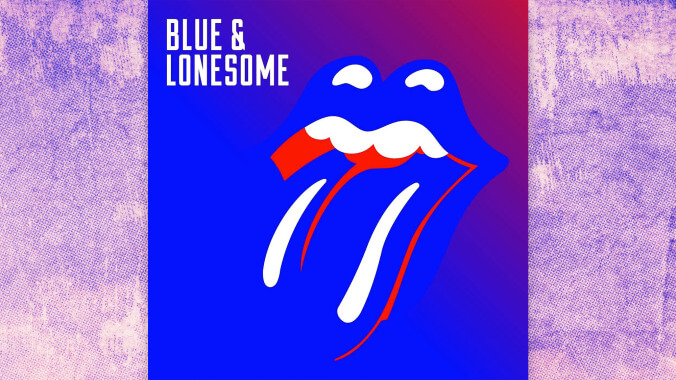
The Rolling Stones effectively stopped writing new original material after A Bigger Bang, choosing to spend their time in the studio polishing up old outtakes for expanded reissues. Then in 2016, they knocked out Blue & Lonesome, their first-ever album dedicated to the blues. It’s a conscious callback to their earliest LPs when the Stones balanced Willie Dixon and Jimmy Reed covers with Buddy Holly songs and original tunes. Here, they concentrate entirely on mid-20th Century urban blues, focusing in particular on Chicago. Nearly half the songs were written by Chicago blues giant Little Walter, a choice that gives Mick Jagger ample room to roam with his harmonica. That’s one of the big surprises of Blue & Lonesome. Rolling Stones lore paints as Jagger as the pop star with wanderlust and Keith Richards as the blues purist, which would suggest that Richards would be the Stone that dominates their blues album. While Keith and Charlie Watts are undoubtedly in their element, Blue & Lonesome belongs to Mick Jagger, who not only tears it up on harp but delivers a vigorous, nuanced vocal performance that gives the album real heart.
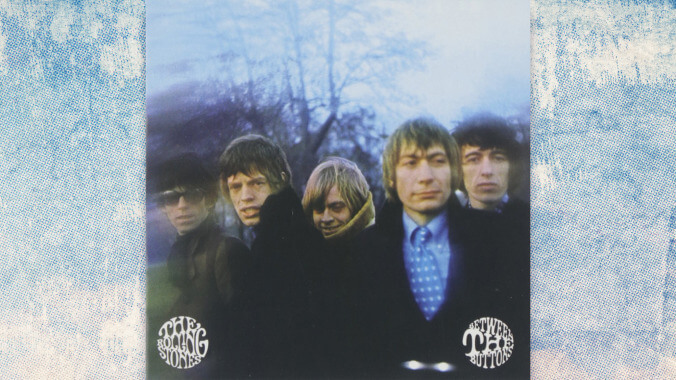
Caught somewhere between mods and rockers, Between The Buttons is the sound of the Rolling Stones thriving in the middle of the swinging London of the mid-1960s. While the band has by no means abandoned rock and roll—”Miss Amanda Jones” is built upon a gnarly fuzz toned guitar, while “All Sold Out” swings hard and, on the American version, “Let’s Spend The Night Together” gets things off to a rousing start—the Stones happily try on many different fashions on Between the Buttons, all brighter than the darkness that permeated Aftermath. There’s the bopping “Yesterday’s Paper,” the tender-hearted “She Smiled Sweetly,” plus the pained and stately “Who’s Been Sleeping Here?,” all moods not heard on previous Stones albums. And while this is colorful and sometimes baroque, Between The Buttons is by no means a psychedelic album: when it comes time to recount a weird, wild trip on “Something Happened To Me Yesterday,” the band opt for a British music hall pomp and circumstance, an absurd and glorious conclusion to one of the more surprising Stones albums.
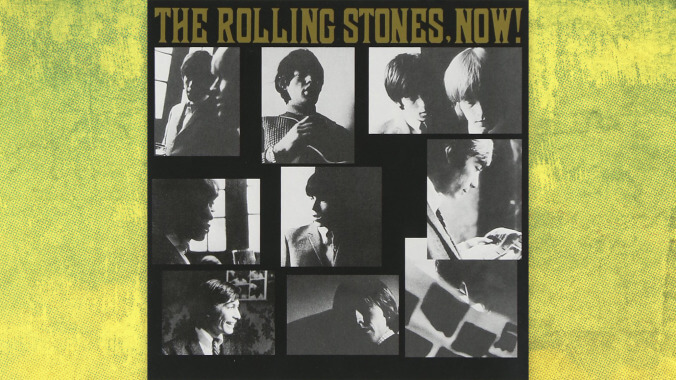
The third Rolling Stones album to be released in America, The Rolling Stones, Now! essentially reworks The Rolling Stones No. 2 which appeared just a little earlier than Now! in the UK. All the additions and edits strengthen the album, particularly as they offer a wealth of originals: the brooding single “Heart Of Stone” and its flip “What A Shame” anchor the first side, while “Off The Hook” and “Surprise, Surprise” shine on side two. Most of Now! is dedicated to blues covers, with the Stones demonstrating a palette that expands far beyond the hard blues of their first album. When they cover Chuck Berry, as they do with “You Can’t Catch Me,” it’s with greater confidence, but the appeal of Now! is hearing the band cook on “Down The Road Apiece” and tap into the Big Easy groove of “Pain In My Heart,” not to mention their back porch version of “Little Red Rooster.”
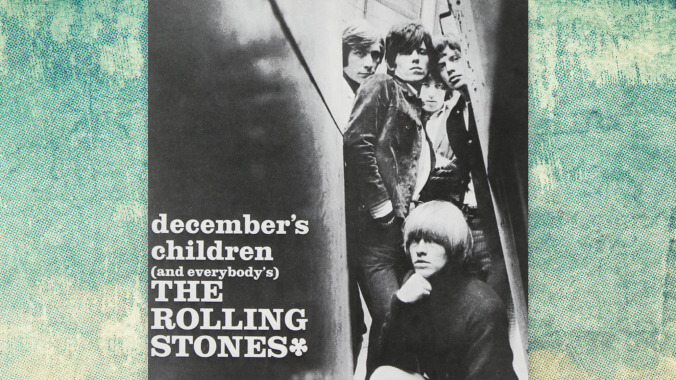
December’s Children (and Everybody’s) explodes into view with a thunderous version of “She Said Yeah,” a Sonny Bono tune first recorded by Larry Williams. It’s thick with fuzz and saturated with noise, a sign that the Rolling Stones were getting harder and nastier as they reached cruising altitude in the wake of the smash success of “(I Can’t Get No) Satisfaction.” That hit isn’t here: It’s on the previous Out Of Our Heads but, in a confusing move typical to the era, December’s Children has much of what was on the UK Out of Our Heads. All the alterations made for a better record: the Stones find a laconic groove on Chuck Berry’s “Talkin’ About You,” dress up Arthur Alexander’s “You Better Move On” with stately acoustic guitars, and rock hard on live versions of “Route 66” and “I’m Moving On,” side-closing codas that are extraneous if fun. It’s the originals that steal the show: the weariness of “The Singer Not The Song” countered by the melancholy of “As Tears Go By” and “Blue Turns To Grey,” plus the jubilant sneer of “Get Off Of My Cloud” and the exuberance of “I’m Free.”
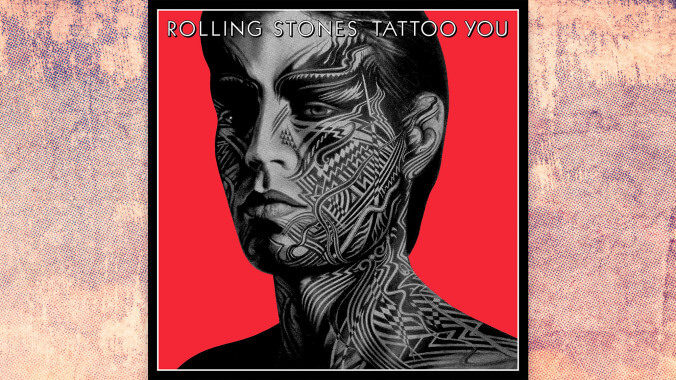
Thrown together in a rush so the Rolling Stones could have some new product on the shelves as they headed out for an international tour in 1981, Tattoo You has no business sounding as coherent as it does. Everything here had been kicking around for a few years, with many of the tracks cut during the sessions for Some Girls and Emotional Rescue, but the gorgeous “Waiting On A Friend” dates all the way back to Goats Head Soup. Tattoo You doesn’t feel cobbled together, partially as it’s divided into a fast side and a slow side. Each side captures signature Stones sounds exceptionally strong, whether it’s the loose-limbed blues “Black Limousine,” lascivious rocker “Start Me Up” or soulful ballad “Tops.” In fact, it could be Tattoo You itself offers a distillation of the Rolling Stones at their peak: it’s not as eclectic or weird as they could sometimes be but it’s a smooth ride from a mean machine.
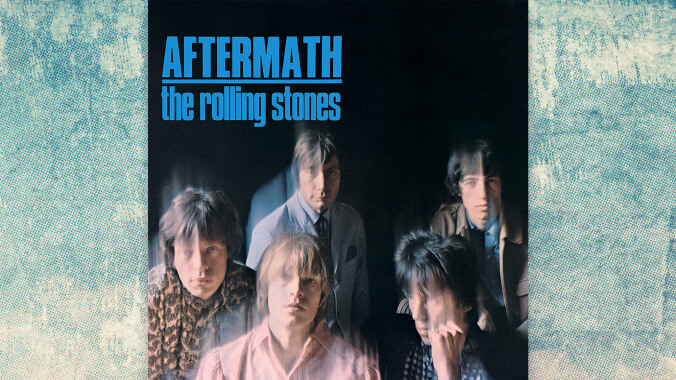
Like so many of their peers, the Rolling Stones hit their stride in 1966, simultaneously tightening up their core rock and roll while venturing into uncharted musical territory. This progression is showcased on Aftermath, the best of the band’s early albums. Here, even the blues doesn’t necessarily sound straightforward: “High and Dry” is a wild country stomp that feels almost sarcastic, “Goin’ Home” is stretched to its breaking point, clocking in at over 11 minutes. The shorter songs show just as much imagination, if not more: “Lady Jane” is a courtly piece of baroque pop, “I Am Waiting” shows a tender vulnerability” and “Under My Thumb” pulsates to a groovy marimba beat. “Under My Thumb” and “Stupid Girl” also have an air of misanthropic misogyny that gives Aftermath an unsettling undercurrent as much as “Paint It Black” does and that uneasiness still gives the album a fair amount of dark power all these years later.

Sticky Fingers is a heavy record, maybe the heaviest the Rolling Stones ever made. There are good times here but they’re usually nasty or sardonic: the images of scarred old slavers in “Brown Sugar” somehow get more outrageous over the years, while the country-rock of “Dead Flowers” is delivered with its tongue thoroughly in cheek. The heaviness is alluring, though, delivered with a narcotic sway on “Wild Horses” and “Sister Morphine” or with some exuberance on “Can’t You Hear Me Knocking,” where thick blues guitar riffs give way to a nimble Latin-flavored jam. “Can’t You Hear Me Knocking” and “Brown Sugar” are defined by the open-tuned chords of Keith Richards. He began experimenting with open chords around Beggars Banquet but on Sticky Fingers, he turns that folk-blues technique into a pummeling wallop, transforming the sound and feel of the Rolling Stones in the process.
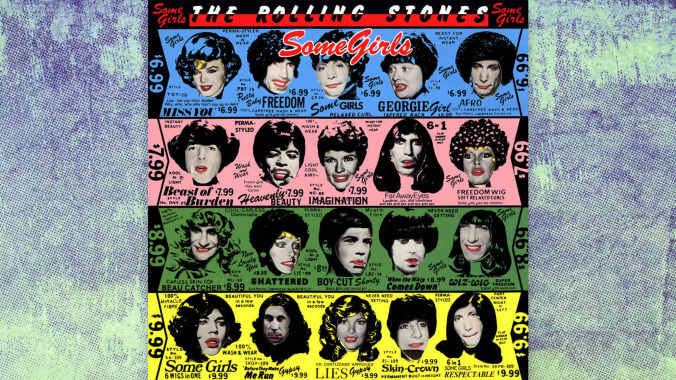
The comeback album that defined all comebacks. The Stones never left the spotlight in the ’70s but they did wind up seeming enervated, a band not quite sure of their purpose. All that changed with Some Girls. Steeped in the nightlife of New York City, Some Girls finds the Rolling Stones dabbling in disco and flirting with new wave, making moves not for the sake of respectability but rather for the fun of it all. This dedication to decadence means there’s a certain vulgarity coursing through the album—it reaches a boil on the slow blues of the title track—but that filthiness is a key to why Some Girls retains its nervy power years and years after all these fashions turned into nostalgia. This isn’t the Rolling Stones setting the pace as much as inhabiting a landscape filled with debauched scenesters, gay hustlers, outlaws on the run, and country bumpkins who run red lights in honor of the Lord. From start to finish, it’s an absolute riot.
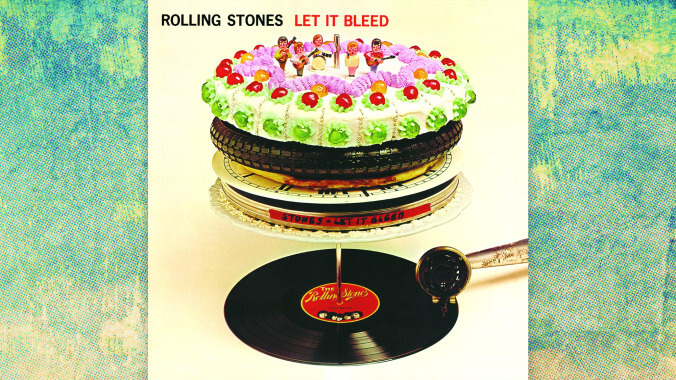
Recorded as the Rolling Stones were in the thick of a messy departure from Brian Jones, Let It Bleed deepens the roots-oriented rock and roll of Beggars Banquet, turning it into something harder, meaner, messier and also majestic. Let It Bleed is bookended by two of the band’s genuine epics: the swirling, apocalyptic doom of “Gimme Shelter” and the operatic release of “You Can’t Always Get What You Want,” two Stones standards that still loom so large in their catalog that they threaten to overshadow the rest of the record. Between those two songs lies some of the best music the Stones ever made. They revel in the squalor of “Live With Me,” send up their own “Honky Tonk Women” with “Country Honk,” essay a psychodrama in “Midnight Rambler” and bring it all home with “Let it Bleed,” a rollicking shamble that adheres thanks to Jagger’s sardonic drawl.
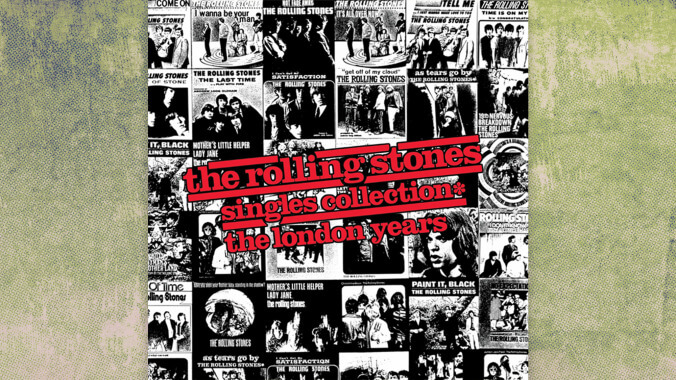
Perhaps it’s a bit of a cheat to include a triple-disc box set on a list of the greatest Rolling Stones albums, but Singles Collection: The London Years does two crucial things: it offers essential material otherwise not available on other records, plus it works as an album on its own terms. The three discs collect both sides of every 45 RPM single the Stone released either in the UK or the U.S. between 1963 and 1971, beginning with their full-tilt version of Chuck Berry’s “Come On” and concluding with “Out Of Time”/”Jiving Sister Fanny,” singles released after the Stones left their original labels of Decca and London for their own record label (“Sympathy For The Devil” is tacked onto the end for good measure even if it never quite was a single in either country). Packed between these two singles are a ton of greatest hits, many of which sound revitalized when heard in chronological context; the fuzz-toned riff of “(I Can’t Get No) Satisfaction” and opening chords of “Jumpin’ Jack Flash” pack an adrenaline rush when heard here. What gives the set its punch are the obscure B-sides that demonstrate just how deep the Rolling Stones discography is. Other bands would find entire careers in the weird, careening blues of “Who’s Driving Your Plane?” or the pagan psychedelia of “Child Of The Moon,” but here they’re grace notes in one of the greatest bodies of work in 20th Century music.
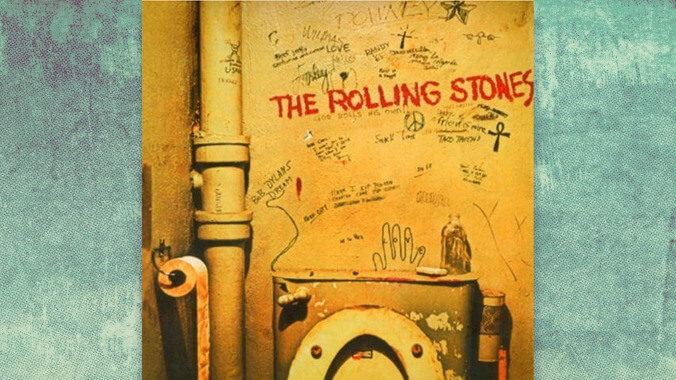
Snapping back to attention after the trippy ramble Their Satanic Majesties Request, the Rolling Stones essentially redefined themselves on Beggars Banquet. Stepping away from psychedelic excesses, the Stones emphasized hard blues, country and folk on Beggars Banquet, a move that mirrored the Americana of the Band on Music From Big Pink. But where the Band wallowed in their backwoods mystique, the Stones were defiantly earthy here, celebrating the “Salt Of The Earth” as they pined for a “Factory Girl.” Sometimes, their affection came with a sneer—“Dear Doctor” seems to send up country conventions—and they embraced darkness on “Sympathy For The Devil” and “Stray Cat Blues.” There are also moments of grace, such as the gorgeous “No Expectations,” but the album’s moment of transcendence arrives with “Street Fighting Man,” an anti-protest song that makes apathy a rallying cry.
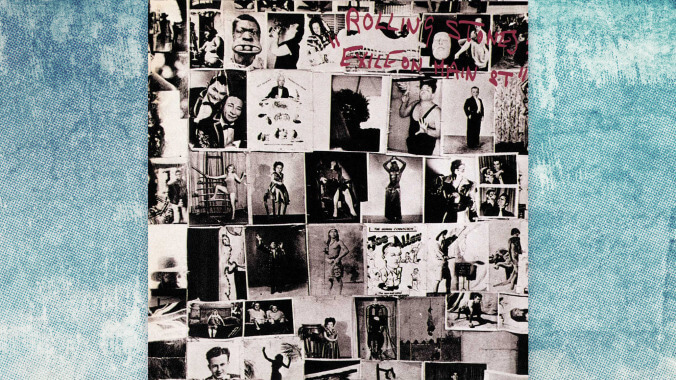
It’s a cliche to claim Exile On Main St as the quintessential Rolling Stones album, but when it’s on it not only sounds like the best Rolling Stones album, it sounds like the best album ever made. The key to the greatness of the double-LP lies in its sprawl, how the album gains strength from its messiness. All the loose ends and detours give Exile its distinct vibe, an atmosphere that’s dank and dense yet inviting in its murkiness. With Jagger’s voice buried in the mix, Exile sounds like the work of a unified front, which is an illusion. Members would come and go during the sessions at a moody villa in the south of France, so Keith Richards winds up playing bass on a handful of tracks with Mick Taylor performing a similar task on several other tunes while producer Jimmy Miller sat in for Charlie Watts a couple of cuts. That the album coheres despite these musical chairs is a testament to how the Stones locked into a certain slippery magic while making Exile. Sequestered in France, the group dug deep into the American music they loved, delivering it with a hard-swinging backbeat then immersing it all in a production that feels as opaque as it is visceral. Nothing else quite sounds or feels like Exile On Main St, an album where the Stones were at such a peak they seemed to operate on an entirely different plane from the rest of the world.
GET A.V.CLUB RIGHT IN YOUR INBOX
Pop culture obsessives writing for the pop culture obsessed.